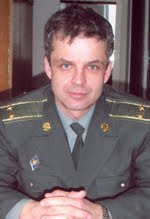Saturday, February 29, 2020
Japan handed over medical equipment to Kharkiv military hospital
Posted by Oleg Bezverkhnii at 23:25 0 comments
Ukrainian military conduct large-scale drills to work out repelling amphibious assault on Azov Sea coast – JFO HQ
Posted by Oleg Bezverkhnii at 10:20 0 comments
Wednesday, February 26, 2020
Varnitsa, the "new Stockholm"
Posted by Oleg Bezverkhnii at 23:17 0 comments
Sunday, February 23, 2020
USS Ross en route to the Black Sea
“With this visit, we are consistently strengthening our relationships with our Black Sea partners,” said Cmdr. John D. John, commanding officer of Ross. “Steady operations in the Black Sea are crucial to building a secure maritime environment and ensuring freedom of navigation.” Ross recently operated with the French aircraft carrier FS Charles de Gaulle (R 91) and as part of Combined Task Force 473 in the Mediterranean during FOCH, a major French navy deployment. Ross provided defensive capabilities for the strike group. In addition to the Ross, this French led deployment brought together, one after the other, forces from Greece, Belgium, Germany, the Netherlands, and Spain, providing a training opportunity for all participants to improve combat readiness. The ship’s operations in the Black Sea will strengthen interoperability with NATO allies and partners and demonstrate collective resolve to Black Sea security under Operation Atlantic Resolve. Ross, forward-deployed at Naval Station Rota, Spain, is conducting naval operations in the U.S. 6th Fleet area of operations in support of U.S. national security interests in Europe. The U.S. Navy routinely operates in the Black Sea consistent with international law, including the Montreux Convention. U.S. 6th Fleet, headquartered in Naples, Italy, conducts the full spectrum of joint and naval operations, often in concert with allied, and interagency partners, in order to advance U.S. national interests and security and stability in Europe and Africa. In June 2015 the guided-missile destroyer USS Ross (DDG 71) transited the Black Sea during an underway exercise with the Ukrainian navy frigate Hetman Sahaydachniy (U 130).
Posted by Oleg Bezverkhnii at 21:46 0 comments
Wednesday, February 19, 2020
The man who immortalized the Nuremberg trials in the drawings
Posted by Oleg Bezverkhnii at 23:52 0 comments
Sunday, February 16, 2020
Oт the Valentine's Day, a thematic excursion "The Great Northern War: Stories of Big Love" was held at the Poltava Battle Museum.
Posted by Oleg Bezverkhnii at 21:58 0 comments
Friday, February 14, 2020
Chernobyl shocker as fungi that eats radiation found inside nuclear reactor
Posted by Oleg Bezverkhnii at 13:32 0 comments
Ukraine shows its newest cruise missile in stunning detail
- Full salvo – 24 missiles, ammunition – 72 missiles,
- The time lag between missiles launched in a salvo – 3…5 s.
- Time from the end of mission to ready-to-fire time for the next mission – ≤15 min.
- ASCM Neptune vehicle range – ≤1,000 km.
Posted by Oleg Bezverkhnii at 10:01 0 comments
Friday, February 7, 2020
The 7th of February 2020 is the 114th anniversary of Oleg Antonov’s birthday.
Posted by Oleg Bezverkhnii at 23:59 0 comments
U.S. holding up $30 mln worth of arms and ammo, Ukraine officials say
Posted by Oleg Bezverkhnii at 23:26 0 comments
Monday, February 3, 2020
The man who is involved in the Gammalsvenskby's life
Posted by Oleg Bezverkhnii at 21:13 0 comments




















